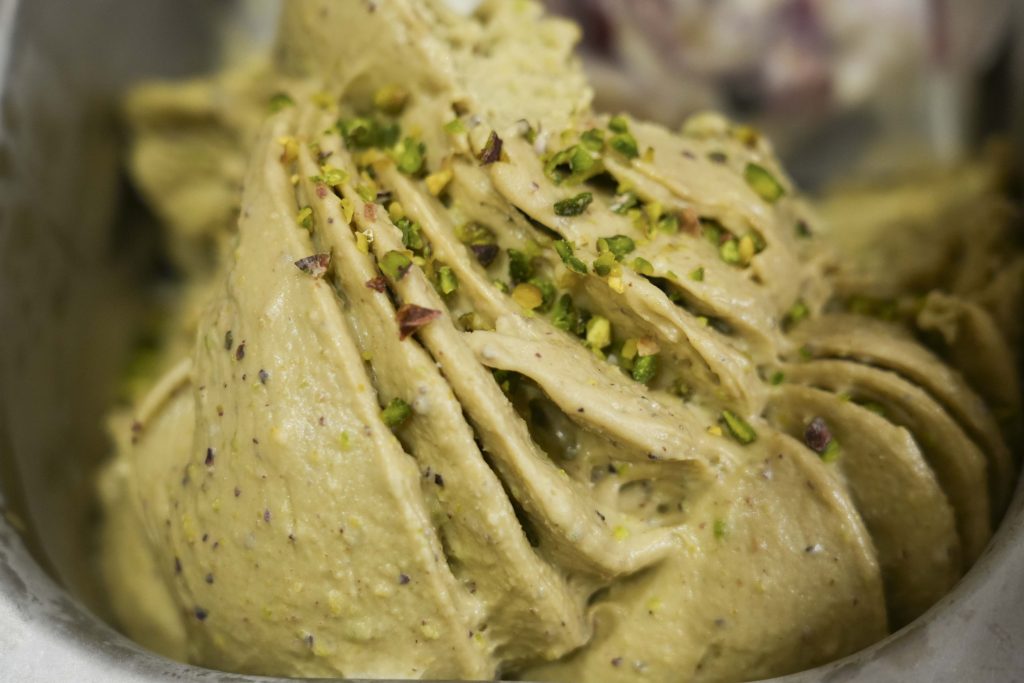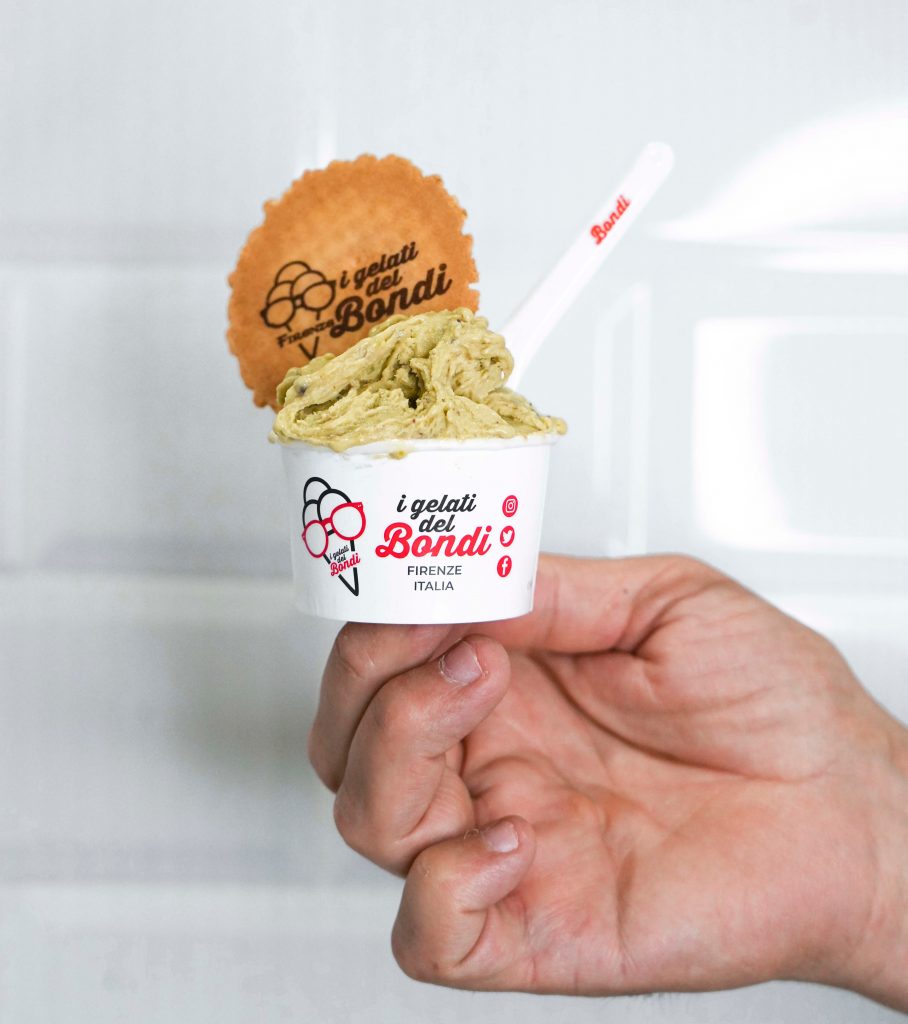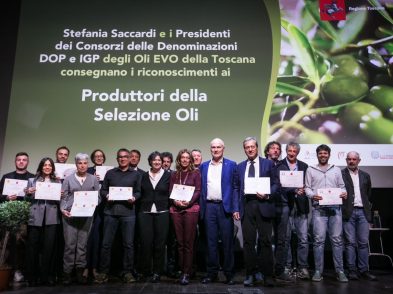Gelato is in a category all of its own, a standalone treat that Italy—and the world—goes crazy for as temperatures rise. I spoke with Vetulio Bondi, master gelatiere and president of the Association of Florentine Gelato Makers, in his unassuming gelato parlour on the corner of via Nazionale and via Faenza.

What should gelato lovers be looking for in order to enjoy the authentic artisan experience? “First of all, look at the colors, at the color of the dark chocolate, for example. If it’s black, it means the ingredients aren’t real because black doesn’t exist naturally.” Vetulio pulls out a jar of 70 per cent dark chocolate to show me the true shade of bittersweet chocolate against the black of my trousers, encouraging me to try a little to educate my taste buds. “Mangia, mangia! What you have to understand is that our sorbetto contains up to 20 per cent of chocolate and the rest is water and some sugar, so how could it possibly become black? If you’re in a gelateria and the dark chocolate flavor is black, my advice is to run away!” (Those last two words escape Bondi’s lips in English, for emphasis, amid our fast flowing Italian conversation.)
What about the piles of gelato with all the candied orange slices and wisps of chocolate? Should we scarper then too? “That’s no good. It’s industrially produced. Over 50% of what you’re eating is simply air. How does it manage to remain frozen when it’s not in the freezer? It’s because air, like snow, tends not to melt. Ice melts, snow doesn’t.”
Any other advice? “See if the gelato is shiny or matte. If the gelato is opaque, it means that it has the right level of crystallization of the water inside and the sugar balance is correct. If the gelato is shiny, that means it’s overly sweet.”

Isn’t it all about personal taste though? “If you like Nutella, you like Nutella, it’s true. But when people come and learn in my lab for 90 minutes or so, it’s a revelation as they realize that what they originally thought tasted good doesn’t taste good at all. The other week, an Indian couple attended my course. They ate some pistachios and, in disbelief, they said, these aren’t pistachios. Yes, they’re green, but pistachios taste like almonds. So, I gave them some almonds and the difference became clear. If you’ve always tasted one kind of wine and then taste something different, you don’t think the new wine is good just because you’re accustomed to something else. We have to educate people.”
Are there any trends among nationalities? “For the most part, Americans choose Oreo, chocolate chip and mint. I’m against palm oil and monoglycerides, but I’ve been making my version of Oreo gelato since 1982. There’s a reason for that: it’s thanks to Oreo cookies that I started to make gelato. I wanted to study Italian Literature at Cornell University in New York and as I was preparing for the admission exam, I’d get lost in the streets of New York… I’d see Basquiat, Keith Haring and Andy Warhol every day since I was living in the Village. For two months, I cleared tables at Anthony Bourdain’s restaurant. When I came back to Italy (my parents realized I was never actually going to study!), I was able to open a gelateria on July 7, 1982; that’s what the United States gave me. Oreo has been the gelato I’ve sold the most, made in my own way, of course.”
“My gelato is more expensive than other people’s.” And rightly so, I think, as Vetulio passes me a generous spoonful of his seductive salted caramel frozen delight, rich and unctuous with that line of saliva-inducing savouriness. “I start at three euro and 24 euro per kilo. It’s like coffee. Why should it only cost one euro with all the research and varieties that exist? We need to explain how things work to people.”


While he has a parlour in central Florence, not far from Santa Maria Novella train station, Bondi’s target isn’t necessarily the general public, focusing instead on a gastronomic approach. I recently tasted his Modus wine and chocolate gusto at Ruffino’s Le Tre Rane restaurant (in actual fact, two days after conducting this interview, I saw the master gelatiere delivering the tubs in person to the winery’s restaurant). “It’s true that I’m crazy and make pistachio gelato from scratch; it’s actually a sorbet. 150 grams of pistachios, which I roast, with three types of sugar and a thickener, xanthan gum, some salt from Trapani, and that’s it. The mint gelato that we make is from Pancalieri essential oil and pandan, which is a natural colorant, something I learned when I used to teach in Asia. It’s not the bright green you find in most gelaterias!”
He’s been featured in top food and wine magazines and continues to do everything in his power to up the quality of the gelato offered in Italy and internationally. “I’m better known outside of Italy than I am in my own country. Before the pandemic hit, I’d get people coming to my laboratory to learn how to make gelato and do internships here. There was a famous American actor for whom I taught a course at his home because he’d eaten my gelato at a place that some of my former students had opened in Los Angeles.”
“I’m not presumptuous enough to say that I make the world’s best gelato; that would a stupid thing to claim. But I like to boast one thing: my gelato is honest. What you eat is the ingredients it’s been made from. There’s nothing else and there are no compromises.”

To close, I ask the million-dollar question: what’s the difference between gelato and ice cream? Vetulio laughs, before replying in English with lashings of Italian charisma. “Oh, it’s really easy. There’s a guy who’s eating both ice cream and gelato. So, I ask him, which one do you prefer? He’s undecided. I explain to him that, in the ice cream, there’s 95 per cent fat minimum: first, there’s cream, then there’s egg yolk, thirdly, there’s sugar and vanilla flavoring. But is it creamy? No, because there’s no air inside. Of course, if I compare gelato with ice cream bought from the supermarket, it’s totally different because if you weigh a gallon of ice cream, it weighs 4.5 kilos. We need to remember that 80 per cent of gelato made in Italy is made from a mix and not made from scratch.”







